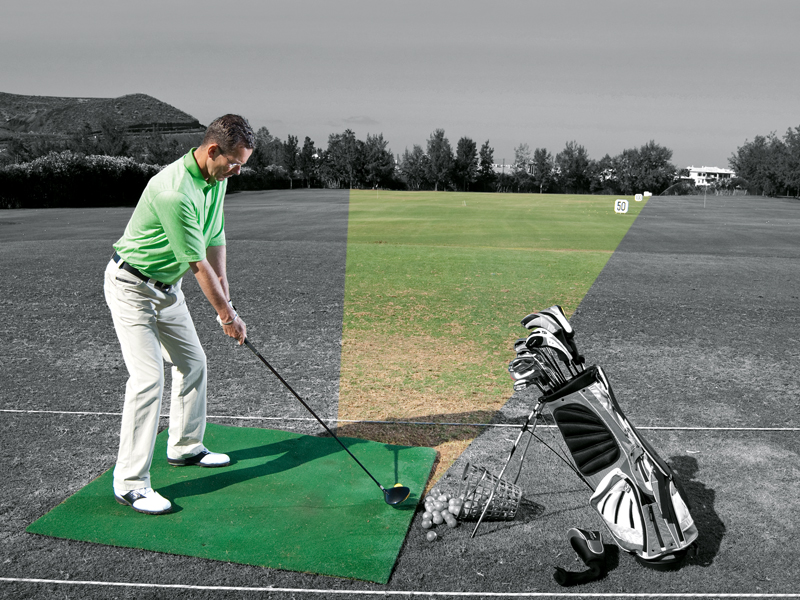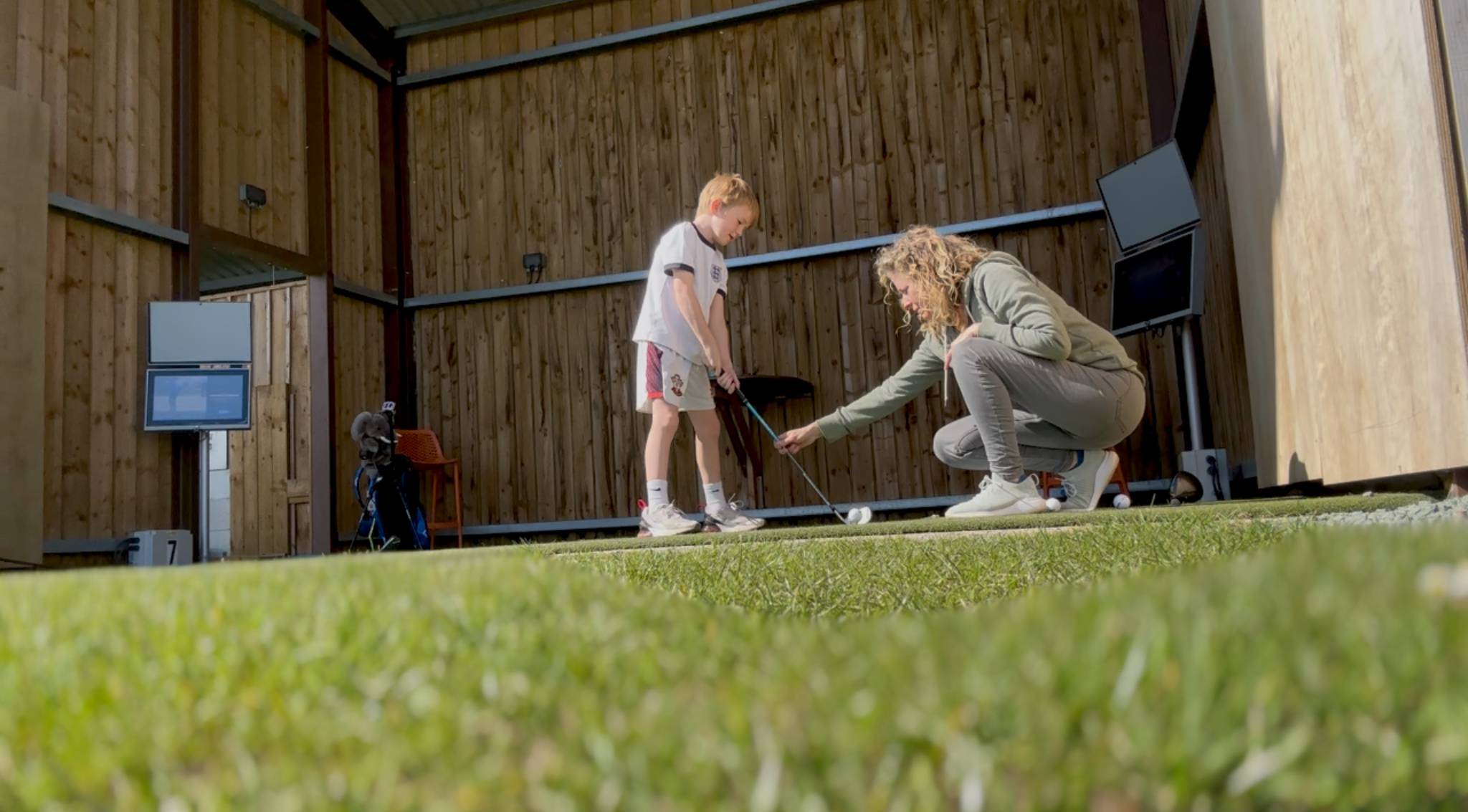Golf Tips: How to Make a target-oriented swing
Golf tips: PGA Professional Alex Nicolson shows you how to make a target-oriented golf swing

Alex Nicolson offers an interesting new take on how to make a target-orientated swing to hit straighter, better shots
Golf Tips: How to Make a target-oriented swing
Most golfers I speak to see their swing fault as both randomly acquired and extremely difficult to change. However consider the possibility that the fault is not an accident – it’s what your brain thinks you need. Our bodies are capable of adapting to the task presented to them and you are not, as it might sometimes feel, shackled to a repeating bad swing.
Like a ship’s radar, our brain is constantly scanning the environment for anything of interest. When we focus on something in particular, our attention can lock onto it, and the body responds accordingly.
To illustrate how this works, let’s take two of the most common swing faults: 1) “casting” the clubhead on the way down or 2) falling onto the back foot through impact. Both result in thin or fat shots and a loss of power.
Many golfers looking to rid themselves of these faults might use swing thoughts like “keep the lag in my wrists” or “get my weight on the front foot”. Whilst technically, these are desirable traits, thinking about them is not actually dealing with the true source of the problem.
Get the Golf Monthly Newsletter
Subscribe to the Golf Monthly newsletter to stay up to date with all the latest tour news, equipment news, reviews, head-to-heads and buyer’s guides from our team of experienced experts.
What is the target of your swing, the target or the ball?
In the first lesson with a pupil displaying those faults, I would ask this question. What I commonly discover is that whilst the flag or green may have started off as their target, there is an “Argh!” moment as they start the downswing. They notice the ball again and in a split second, the target of their swing switches to the ball. If you find the smoothness of your practice swing disappears when there’s a ball in the way, perhaps this is happening in your swing, but you’ve never noticed it before.
If you look at your swing through this light, the downswing faults no longer seem so random. Falling backwards through the shot, or casting the clubhead make much more sense – they are symptoms of the anticipation of impact.
Your most effortless golf is possible if you see the purpose of the swing as the target (like the flag), and on its journey it collects the ball. Have you noticed how much time the best players spend looking “out there” rather than “down there”? Note, this is not something to start doing after you’ve solved the swing, it’s something that can heal the swing in itself.
What we often do in our coaching to help golfers experience the difference between a tension-filled, impact-anticipating hit, and a free flowing swing to a target is (believe it or not), throw clubs.
We find a spot with plenty of space (in every direction) some old clubs, and ask the golfer take a regular address position, focusing their attention on a target 10-15 yards in front of them. Without worrying about technique, the trick is to just eye up the target and let it go. This is real, instinctive caveman stuff.
What happens is genuinely remarkable. Impact-anticipating faults like casting of the clubhead and falling onto the back foot disappear. When we video new (often disbelieving) pupils their throwing swing looks like the one they always aspired to: athletic, efficient, free-flowing, with wonderful extension of the arms into the follow through. What it proves is that your body produces different techniques dependant on the target. Club-throwing swings work because the brain is in no doubt the target is “out there”, not “down there”, and produces different (and desirable) mechanics accordingly.
If you don’t have the space to practice your own club-missile system, you can get a feel for it without actually letting go of the club. When you’re next at the range, start off with some small pitch shots. Without a ball, stand in the set up position, and take a really good look at the flag. So good a look, that when your eyes return back to the ground, in your mind’s eye you can still see the flag. How long can you hold that image for? For the period of time nothing else pops into your head, you have successfully placed your attention on the target.
Now make some practice swings feeling as if the flag is drawing the clubhead towards it. When describing the experience, pupils often use words like “smooth, effortless, or release”. Each swing you make with the target genuinely drawing you, your body sub-consciously makes little adjustments toward this new goal. It’s a swing change, but without really trying.
Before you introduce the ball you need to make sure you can strike the turf after where the ball would be (in a real shot with an iron, the lowest point of your swing should be about 3 inches after the ball). Let your instincts guide you here, and if you find yourself making some adjustments to your set-up to make this easier, that’s fine. The majority of golfers may find they strike the turf too early at first, but if the flag consistently remains the target of the swing, your ability to make turf contact later, will improve.
The trick is to keep your attention on the flag during the swing. No swing thoughts, no instructions to yourself, simply an image of the flag. This is an exercise in concentration that will have mechanical benefits. The reward will be more clubhead speed without tension, a better ball-turf contact and a target-oriented swing.
-
 I’m A PGA Golf Coach - Here's Why I Made Sure My Kids Can Play Golf
I’m A PGA Golf Coach - Here's Why I Made Sure My Kids Can Play GolfFrom life lessons to lifelong friendships, Top 50 Coach Katie Dawkins on what golf can give your children
By Katie Dawkins
-
 Rory McIlroy's Masters Win More Popular Than Tiger Woods In 2019 As Incredible TV Ratings Released
Rory McIlroy's Masters Win More Popular Than Tiger Woods In 2019 As Incredible TV Ratings ReleasedMcIlroy's role as golf's primary needle-mover continued on Sunday as the Northern Irishman's fifth Major attracted an awful lot of eyeballs in the USA...
By Jonny Leighfield